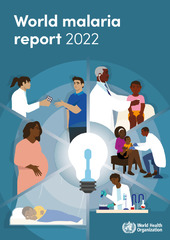IPTp &Malaria in Pregnancy &Resistance Bill Brieger | 02 Mar 2023
Are we prepared to protect pregnant women from malaria as SP resistance spreads
Adegbola and colleagues note that “the efficacy of SP-IPTp is threatened by the emergence of sulfadoxine-pyrimethamine resistant malaria parasites, “which has been observed in East Africa. They therefore, studied the situation in Nigeria, the country with the highest malaria burden in the continent. Their study showed that “the prevalence of VAGKGS haplotype seems to be increasing in prevalence.”
In conclusion, they worried that, “If this is similar in effect to the emergence of 581G in East Africa, the efficacy of SP-IPTp in the presence of these novel Pfdhps mutants should be re-assessed” in Nigeria. This situation threatens the use of sulfadoxine-pyrimethamine (SP) in two major prevention programs including intermittent preventive treatment during pregnancy (IPTp) and seasonal malaria chemoprevention (SMC) for children.
The benefits of IPTp using SP is the ability to administer chemoprevention in a single directly observed dose. Alternative medications are being explored, but from the behavioral intervention perspective, the low cost and simplicity afforded by SP is ideal.
 The IPTp strategy had been modified a decade ago from requiring 2 doses, to monthly doses from the second trimester onwards because of parasite resistance or what is also termed drug tolerance by the parasite. Tolerance implies that the drug may still work, but at higher or more frequent doses. Such changes have cost and behavior change implications. Many country reports from the Malaria Indicator Surveys show an expected drop-off in uptake of SP between the first and third doses. For example in the 2021 Nigeria MIS IPTp1 uptake was 58%, while IPTp3 had reduced to 31%.
The IPTp strategy had been modified a decade ago from requiring 2 doses, to monthly doses from the second trimester onwards because of parasite resistance or what is also termed drug tolerance by the parasite. Tolerance implies that the drug may still work, but at higher or more frequent doses. Such changes have cost and behavior change implications. Many country reports from the Malaria Indicator Surveys show an expected drop-off in uptake of SP between the first and third doses. For example in the 2021 Nigeria MIS IPTp1 uptake was 58%, while IPTp3 had reduced to 31%.
A related problem in Nigeria is the ubiquitous availability of SP in medicine shops across the country in contrast to official policy limiting it to use in IPTp and SMC. The challenge is finding affordable and feasible alternative medicines for IPTp. In the meantime, we have not even reached coverage targets using SP nor fully achieved rollout of companion interventions such as the use of Insecticide Treated Nets. Much work is still needed to protect pregnant women and fetuses from the malaria induced problems of anemia, low-birth-weight, stillbirth, and more.
A related study from Cameroon: The occurrence of sub-microscopic P. falciparum parasites resistant to SP and intense malaria transmission poses persistent risk of malaria infection during pregnancy in the area. ITN usage and monitoring spread of resistance are critical.
https://malariajournal.biomedcentral.com/articles/10.1186/s12936-023-04485-7



















